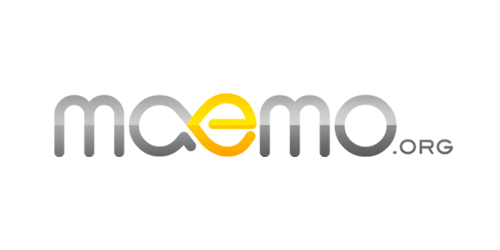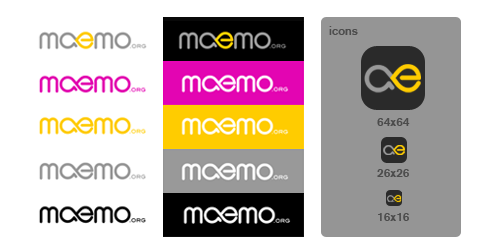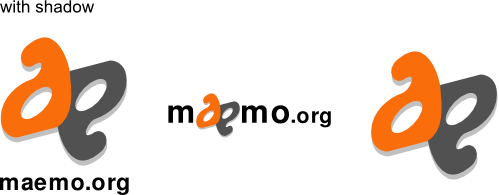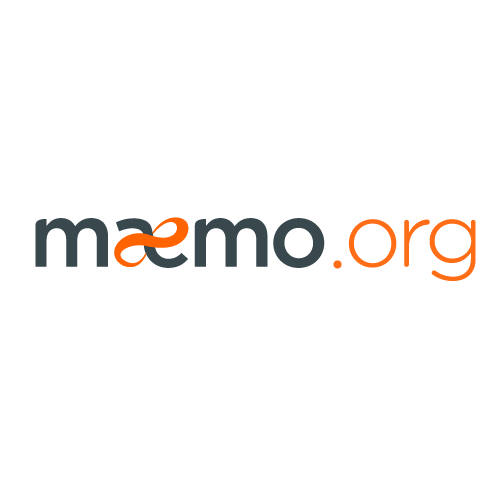August 14, 2008
maemo
1 Comment
A couple of major things are happening around Maemo just before my holidays (oooh, scary) – first is that we recently rolled out some improvements to Maemo profiles – there are many new fields, including IM and IRC usernames, and the possibility to enter multiple email addresses for karma, and in general we prettied things up.
One new field is the company that people work for – and this is particularly useful in the newly spruced up profile ranking page – previously this page listed only usernames and karma, it now includes company and real name, allowing you to see at a glance where contributions are coming from. Of course, for this to be really useful, now that the fields are there, we need more people to fill them in 😉
The second big thing is the inaugural Maemo community council election. The entire Maemo community will be electing 5 people from among the most active community participants to represent the community’s interests to Nokia, and to co-ordinate community initiatives.
Nominations are open now – anyone with over 100 karma points can nominate themselves by sending a mail with their name, company affiliation and motivations for running to maemo-community@maemo.org before 23:59 UTC on the 2nd of September. The full list of eligible candidates is in the wiki.
July 31, 2008
maemo, marketing
2 Comments
As part of the judging panel for the maemo.org logo contest (along with Peter Schneider, Tim Samoff and David Greaves) I had the daunting task of choosing the winner from the long list of entries to the maemo.org contest. There were 62 people who submitted logos for consideration, and a total of around 120 logos to choose from (excluding variants of the same logo), we had our work cut out for us.
In the end, we went for this logo from glaolivier:

The judges (that includes me!) liked the modernity of it, the clean typeface, the call-out to the current maemo.org colours, and the mixed metaphor of the a and e joined – infinity, a meeting of minds, and openness. And it was pretty. There are a bunch of single-colour and flat variants for things like monochrome print, t-shirts and so on.

We’re very happy with it, and we believe that everyone else will be too.
July 24, 2008
freesoftware, gnome, maemo, marketing, running
1 Comment
OSCON has been pretty cool this year so far. It’s been really weird, since I haven’t been in North America too often in the past, and this is my first ORA conference, to be meeting people I’ve exchanged email with for years in the corridors, and bumping into people that I’ve been hearing about for ages. There’s also a decent scattering of people I already knew, too. Far too many to name individually without leaving people out & insulting somebody…
I arrived on Friday, and to help get over jet-lag, I decided to go out for an hour-long run. After losing all sense of orientation, and going North when I thought I was going East, that ended up being a 2 hour run. Which was nice.
Over the weekend, the FLOSS Foundations group met, and we talked about lots of stuff – accounting, membership, CRM & donor management software that non-profits can use (there isn’t any that works well enough), merging foundations, and how umbrella foundations work (targeted funding, etc), best practices for dealing with donors (big and small), merchandising, CLAs, trademark policies, and a really interesting discussion on university outreach, the creation, aggregation & distribution of open course materials and university outreach.
All in all, a very valuable 2 days.
On Monday, I attended OMX, the first edition of the Open Mobile Exchange. Myself & Paul Cooper stepped in at the last minute to give a tag-team presentation on GNOME Mobile which went, to my mind, very well. Having 2 people was great, because it meant that all of the things we wanted to say got said (usually I end up being quite non-linear and saying “oh, earlier, I forgot to mention…”, with Paul that didn’t happen). There was a decent amount of GNOME Mobile presence in any case – Jim Zemlin had nice things to say about us, and Jenny Minor from Vernier and Lefty Schlessinger from Access gave presentations from the perspective of a device manufacturer and a platform developer.
Tuesday was a quiet day for me – finally got to have quality phone time with Anne, and attended the Maemo sprint meeting on IRC before eating with Stormy – we talked about a couple of cool things I’ve been working on for the past two days that I hope to be able to announce in the next few days.
All in all, a great conference, social & work merged, mixed, mashed, and with a spot of early-morning running & Tour de Francing.Happy happy joy joy.
Tonight: RedMonk beer tastes Good.
July 22, 2008
gnome, humour, libre graphics meeting, maemo, marketing
5 Comments
That is the question…
I am honoured to have become the latest GNOME personality to catch the eye of Sam Varghese.
Sam feels I was unfair in my characterisation of him as a “shock jock”. He may be right… he says himself that the definition of a shock jock is “a slang term used to describe a type of radio broadcaster (sometimes a disc jockey) who attracts attention using humor (sic) that a significant portion of the listening audience may find offensive.” Clearly, since Sam’s not funny, I was unfair. Sorry Sam.
I take issue with Sam’s massive leap (which reminds me of when my maths professors used to say “obviously it follows…” at the end of complicated theorems) when he says that I “have to fight the perception that any of [our] major sponsors is making nice noises to the other camp”.
First, as I have told Sam on numerous occasions when he contacts us for answers to leading questions, we do not think of KDE as “the other camp”. Second, Mark Shuttleworth doesn’t exactly avoid a perception that he’s a fan of KDE. Later in the same article, he says that he thinks that KDE have got a nice rate of development going, and are driving innovation better than GNOME. He’s the first top-paying member of KDE eV, which is roughly the same amount of money annually as Canonical gives to GNOME.
And Mark’s not alone. Nokia are sponsors of both Akademy and GUADEC, as well as investing heavily in both GNOME (through Maemo) and QT (and paying the wages of some KDE developers).
What Sam has trouble understanding is that I have an issue with sloppy journalism. I like the KDE developers, we get on well, and I’ve done a lot of work bridging gaps between projects – whether it be through the organisation of Libre Graphics Meeting or FOSTEL, or my participation in the FLOSS Foundations group, or the numerous conversations I have with KDE board members about any number of subjects (including Akademy & GUADEC colocating).
So when Sam sets me up as a shill, or as someone who has a problem with KDE (or considers them competitors) he’s ignoring a body of evidence that suggests otherwise. But then, with Sam, that’s par for the course.
July 18, 2008
gnome, maemo, marketing, work
2 Comments
I only just got home Friday evening, and after a weekend with the family, and 3 working days this week, I’m off again to OSCon, for the first time. I have a feeling I’ll be seeing some familiar faces 🙂 I’m currently posting this blog entry (which I wrote on the airport) in room 640 of the Doubletree (anyone who’s reading this & wants to grab a bite tonight, ring me at +33 677 019 213).
On Saturday and Sunday, I’ll be helping run the FLOSS Foundations meeting, then on Monday I’ll be helping out a bit with the Open Mobile Exchange day. I may take Tuesday as a relaxing/working day before the conference proper, where I’ll be giving the State of GNOME lightning talk on Thursday morning.
My main reason for going to OSCon, though, is to meet people who might be interested in availing of my consulting services. As someone who’s recently set up shop, but who has worked with free software communities for many years, I feel I’m well positioned to help companies save money by working better with communities they depend on. It benefits everyone.
My services go from presentations to managers & directors, training of developers in the dynamics of a given community and how best to work with them, to on-site consulting on specific issues like free software governance, community management and integrating free software best practises into your development team.
The transition from closed shop to free software participant is complex, and often underestimated. I can help make it easier.
I don’t much like banging my own drum on my syndicated blog, but I figure that I don’t do it very often, so… if you need someone like this, drop me a line.
July 18, 2008
freesoftware, gnome, guadec, maemo
1 Comment
It’s been a hectic week, but I really wanted to write up some notes from this year’s GUADEC for posterity, and to share some of the great stuff that happened that people might not know about.
GNOME Mobile
After arriving late (very late) on Monday, I was up early to go & lead the GNOME Mobile BOF in the nice luxury bar on the top floor of the building.
The meeting location had been changed the day before, so we left people an extra half an hour to find the room. Unfortunately, we were a couple of days late to appear in the printed program once we’d decided when to hold the BOF, so some people who really wanted to be there found out afterwards.
The BOF went well – some really interesting discussions, and, I hope, some momentum to carry us through to a successful 2.24 GNOME Mobile release and a productive collaboration effort over the coming months.
We will be working on updating the website to list the active participants, collect and publish success stories from GNOME Mobile developers and users, and provide a more fruitful collaboration forum for participants.
Keynotes
I loved Leisa Reichelt and Matt Webb‘s keynotes. Since I was the one who invited them, I’m glad that they seemed well received by those who attended. Matt’s keynote suffered a little by being at 10am, but unfortunately he had to fly away early in the afternoon, being the FOO that he is. Interesting factoid: the book that Matt co-authored for O’Reilly, “Mind Hacks”, was not for sale at the ORA stand. I bet that we could have set up a signing session if she had some 😉
I also enjoyed Chris Blizzard’s keynote, and Alp Toker and Kristian Reitveld’s sessions were choc a bloc with interesting technical stuff.
Unfortunately, I didn’t see Federico’s talk as I was already at the airport, and thus I also missed the closing plenary, the foundation meeting, and (with great regret) the lightning talks.
Presentations
I did get to catch some great presentations though. Clutter Guts was great – really fascinating stuff, and as always, pippin gives a mean demo.
I caught Travis Reitter’s Soylent talk, and I think I missed most of the feature presentation & demos in the first 5 minutes… which was unfortunate. It seems to me like libsoylent is aiming to provide the type of API I was kind of expecting from Telepathy… I don’t know if that’s a pair representation.
I also caught Owen Taylor presenting Big Board and the GNOME Online Desktop – promising stuff, and it seems like it’s almost at that inflection point you get in a project where it goes from a small project to one that gets adapted everywhere. It seems to be, as I tweeted at the time, like Gimmie, brought through to completion.
I think the only other presentation (outside of keynotes) I caught was my own, which seemed fairly well received. I managed to give Chris 20 minutes break before his keyboard too, which was great.
GTK+ 3
I’m not going to take any part in the whole GTK+ 3 discussion, though, except to share my own experiences with third party developers. Having worked with a company that had a GTK+ 1.2 interface that we were supporting for years for a client because the client didn’t want to pay to have it ported to GTK+ 2.x, I see where Miguel is coming from. I also understand that it would be good to have some idea of the things people don’t like in the current platform before committing to an API freeze for at least 2 – 3 years again.
Perhaps that would be a good first step – going beyond the initial rant to say “OK, what features do people not like? What do we need to change/add to the current platform to address the needs application developers have?”.
Like I said, I’m going to mostly stay out of it, except to reiterate one point I made on the marketing list – I think it’s a bad idea to connect a change in major version number in GNOME to a change in the API of the platform. GNOME version numbers indicate compelling new features to users, API version numbers convey something about the API, which users (and, by extension, press) don’t care about. We need to concentrate on the user when talking about GNOME versions.
GUADEC selection
I was happy to sit in with the board on the discussion with KDE eV when the three bids for GUADEC/Akademy 2009 were considered. Based on what I’ve learned from being involved in GUADEC organisation every year since Kristiansand, I recommended that the final cost to attendees (with particular thought for companies sending many developers from the US) be the primary deciding factor, the organising committee and their community credentials second, with the location itself being third.
While I’m happy to see the Canaries chosen as the final choice, I don’t think that my suggestions were particularly given precedence in the decision making process. In any case, I hope I’ll be able to help make GUADEC 2009 a success.
Stormy
I know what she’s thinking – “I’ve had enough publicity at this stage, let’s get people talking about GNOME” – but I am really really pleased to see Stormy come on board as the new Executive Director. When I mentioned it to her back in April, I really didn’t think that she would be interested, but I saw from that first spark of interest that she has wanted to work with the GNOME project for a long time. The stars were aligned and it has come to pass.
I know, when we decided to hire for the role a couple of years back (yes, it’s been that long) Jeff had major concerns about the title – he wanted to set different expectations to those we had of Tim. I agree with that – and I think that the board have done a good job of setting those expectations with Stormy. She is our relationships person, and we direly needed one working full time.
Outside the conference
The FreeFA World Cup has its third running this year, with 3 teams battling it out in the Turkish sun (I’m still trying to work out if we were mad dogs or Englishmen) before battling with Turkish rush-hour traffic (for some reason, Istanbul rush hour seems to be around 8pm). Others have written about it already. In spite of the considerable handicap of wearing the most heat-absorbant t-shirts, the black team won through against the red & white teams, thanks to a rock solid defense. There’s no praise like self-praise they say.
SMASHED was again a great success – this is the third time I’ve brought a bottle to a conference, after buying a Glenrothes 10yo on my way to China for the Linux Foundation Developers Summit and bringing a bottle I’ve completely forgotten to Austin for the Collaboration Summit in April.
This time, I will definitely not forget – the Glengoyne 12yo cask strength I brought was a lovely bottle among other lovely bottles. We spread the whisky love around, I hope that all the whisk[e]y lovers on the boat got at least one wee dram. Karl & John Carr were feeling a little worse for wear at the end of the evening. I managed to be a little more reasonable than those two… but only slightly. And the nightcap of reki on the pillows put paid to any hope I had of making it into the conference the following morning.
I really enjoyed getting some quality time with Luis, jrb, Lefty, vuntz and Stormy, and the many discussions I had on the rooftop, in the hallways, and on the boat. The really best thing about GUADEC is the conversations happening all the time.
July 16, 2008
freesoftware, gnome, maemo
12 Comments
I hate to give attention to Sam Varghese, but he is, after all, my favourite free software Shock Jock – always looking for conflict, or the controversial angle on the most innocuous statement.
This week, he wrote:
Is Mr Ubuntu, Mark Shuttleworth, slowly warming towards KDE?[…]
Given the amount of flak that the recent KDE release – 4.0 – has taken from the pro-GNOME pundits at sites like linux.com, you would think that the worst possible thing any supporter of GNOME – as Shuttleworth is perceived to be – could do is to speak out in support of anything associated with KDE.
But you would be wrong. Shuttleworth is now floating the idea that there can be a QT-based GNOME.
So we look farther, and see that Sam is referring to the article in derStandard.at which Andreas wrote in GUADEC. Mark says, and I paraphrase: “GNOME’s platform licencing is company friendly, QT’s isn’t, but if QT were to change their licencing strategy to a company-friendly licence, GNOME would have some hard choices to make”.
To be fair, let’s get the direct quote in here:
A lot is going to depend on what Nokia is going to do from a licensing point of view. And separately what GNOME is going to do if Nokia makes the QT-licenses effectively compatible with the GNOME vision, can they embrace QT as a platform? […] I think it would be perfectly possible to deliver the values of GNOME on top of QT. There are licensing issues, GNOME is very much built on the LGPL, allowing companies to build their own products on a free software system, giving them some freedom and flexibility in their choice of licensing. That’s very frankly been a huge drive for the adoption of GNOME by corporate ISVs.
So, let me read between the lines (well, in fact, I’m just reading *on* the lines): if QT became LGPL or X11 or BSD, that would instantly make it a more attractive platform for commercial developers. Mark thinks that it’s possible to bring the GNOME vision of universal access through a beautiful, simple, accessible, internationalised, integrated user experience to the QT platform.
I may be nuts, but isn’t that more an indictment of KDE than a recommendation? Isn’t he saying “the KDE guys should be more like GNOME”? Isn’t he suggesting that if QT were available as LGPL or more liberal that we all become C++ hackers and port GNOME over to QT?
As it happens, I think that’s extremely unlikely, given the investment in C that GNOME has already made – changing the underlying platform would mean re-writing every single application, and leaving a lot of dead & wounded behind. Plus, I have a lot of faith that through improved bindings and a less shackled GTK+, combined with the 2-3 year “vision” arcs that the release team proposed at GUADEC, that we can inject a healthy dose of adrenaline into the heart of GNOME over the next couple of years.
June 26, 2008
maemo
1 Comment
The maemo.org logo competition is going strong, and we now have many dozens of logo contest submissions.
Some of my favourites so far:
The very first one, Attila’s butterfly

Jussi’s first effort – particularly with just the A and the E:

And Jussi’s second entry, with the Möbius strip. You can see the evolution of this idea, and his collaboration with Thiercito, on the latter’s talk page, which provided some insights into the creative process for me. It’d have been nice if he had trimmed some excess whitespace off the images, mind:

Think you can do better than these or other entries? There’s still lots of time left to get your entries in before the deadline! We’ll be announcing the selection process over the next week or two once the last details are sorted out.
June 25, 2008
gnome, maemo
6 Comments
With the recent discussion in blogs around the GNOME world, it can be easy to forget that there have been some great new applications for GNOME appearing recently. Many of these are written by a new breed of GNOME developer, young students with none of the weight of history sitting on their shoulders, and they are great!
If you haven’t tried them yet, then you should. Most of these aren’t in the GNOME desktop suite, and could probably do with some more exposure.
Here’s a few that came to mind without me having to think too long:
- GNOME Do: This is an amazing application! Its plug-in system is what makes it really great – add all music by an artist to your Rhythmbox playlist, tweet that you’re at your computer, send an IM to a contact, all with just a few keystrokes
- Hamster: I discovered this app recently, and have been very impressed. A plug-in for GNOME Do, and it’d be perfect 😉
- Tasque: For the GTD wannabe that I am.A clean, small app to handle TODO lists.
- Cheese!: Now that this is in the desktop, I guess everyone knows about it. A PhotoBooth clone with an authorwith a sense of humour – especially on April 1st.
- Vagalume: My absolute favourite Last FM client.
- Pimlico: A mobile suite of applications. I tried out Dates and Contacts on my N810, and was very impressed. Everything I personally want in a PIM – simple, functional, intuitive, beautiful.
- Transmission: After using the old GNOME bittorrent client for so long, I was really happy to see someone put the work into making a sensible BT client for GNOME, and Transmission is it. Bravo.
Some of these apps have come from people working in companies like Igalia, Opened Hand and Novell, some of them from students, some of them from hack weeks, all of them have some things in common – a sense of aesthetics and attention to the user experience, lightweight user interfaces ruthlessly focussed on a core usecase. And all serve their users well.
Another thing that many of them share is a sense of humour – when using Hamster or Cheese, you can’t help but feel that the author was having a ball.
Nothing in particular set me writing this, I just wanted to point out that there are many new applications aimed at the end user coming out of GNOME, humour and creativity still live here.
June 16, 2008
freesoftware, maemo
10 Comments
“We all have some learning to do” – that was the core message of Ari Jaaksi’s presentation, which has turned into a massive shitstorm over the past few days.
Yet again, I’m amazed at a knee-jerk populist reaction to a news story, and completely stunned at the spin which has been given to this, and swallowed hook, line & sinker by a large group of supposedly intelligent people. It’s been going on for years, so perhaps one more time shouldn’t surprise me, but it does.
For the benefit of those living in a burrow, here’s the quote that started it all:
“We want to educate open-source developers,” said Jaaksi, who is Nokia’s vice president of software and heads up the Finnish handset manufacturer’s open-source operations. “There are certain business rules [developers] need to obey, such as DRM, IPR [intellectual property rights], SIM locks and subsidised business models.”
That’s the bit, since quoted without context, from an article which included the quote with little context in the first place. Look a little further, and you will see that this is the same message that Dr. Jaaksi delivered in San Francisco a few months ago: Nokia is learning how to interact with free software projects, but if free software developers want the software to be adopted further in mass-market products, then we need to understand the constraints that businesses work under, and address them.
In my mind, that’s a big “if”. Companies work under a bunch of constraints which don’t sit well with free software – DRM, the need for differentiation and a competitive edge. But also dealing with sub-contractors and suppliers who have their terms and conditions under which they’re prepared to work.
Some of the most outrageous things I’ve read these past few days:
“No more Nokia for me, I’m buying an iPhone”
Yeah, because Apple are a really free software friendly company.
“If Nokia can’t get the specs for chips from their suppliers, they should just build their own”
Uhmmm… do you really think that Nokia wants to go into competition with every micro-electronics company in the world? How much resources do people think Nokia really has?
Some people think that Nokia should use only free software in all their devices, regardless of the consequences of that (the consequences would be more difficult government validation of your phone with the GSM networks, no operator take-up of the phones, and thus no cheap phones subsidised when you take a subscription, and underpowered and outdated hardware). That may be fine for a user to have as an option if they don’t mind paying hundreds of dollars fora phone that doesn’t do as much as one that they can get for a tenth of the price or less – in fact, the Freerunner is aimed right at that market. It’s a niche market, not a mass market. One day, maybe…
In the meantime, the conclusion I draw from this is that the slashdot crowd aren’t as reasoned as I had hoped, many people who should know better are jumping to conclusions based on news headlines. What ever happened to critical thought?
Free software is great, a momentous gift to the world, but does not provide the answer to all questions. Sometimes, free software will not be the answer. Some sets of constraints will exclude us from the start. The battle is to change the constraints. But you cannot expect a business to lose money to satisfy philosophical arguments. If you’re ever talking to someone and trying to “sell” them free software, your starting point should be: “how will this (make|save) me money?”
Usually that answer will be easy to find – lower R&D costs, licencing fees, support costs you control better by deciding when to buy support, on what terms. But occasionally, there is no argument. There is no way to persuade Microsoft that releasing Office under the GPL would be a money-making move for them – it plainly wouldn’t be.
So if the answer to that question is “it won’t”, then wish them well, perhaps recommend something that will, and move on to another subject.
« Previous Entries Next Entries »




